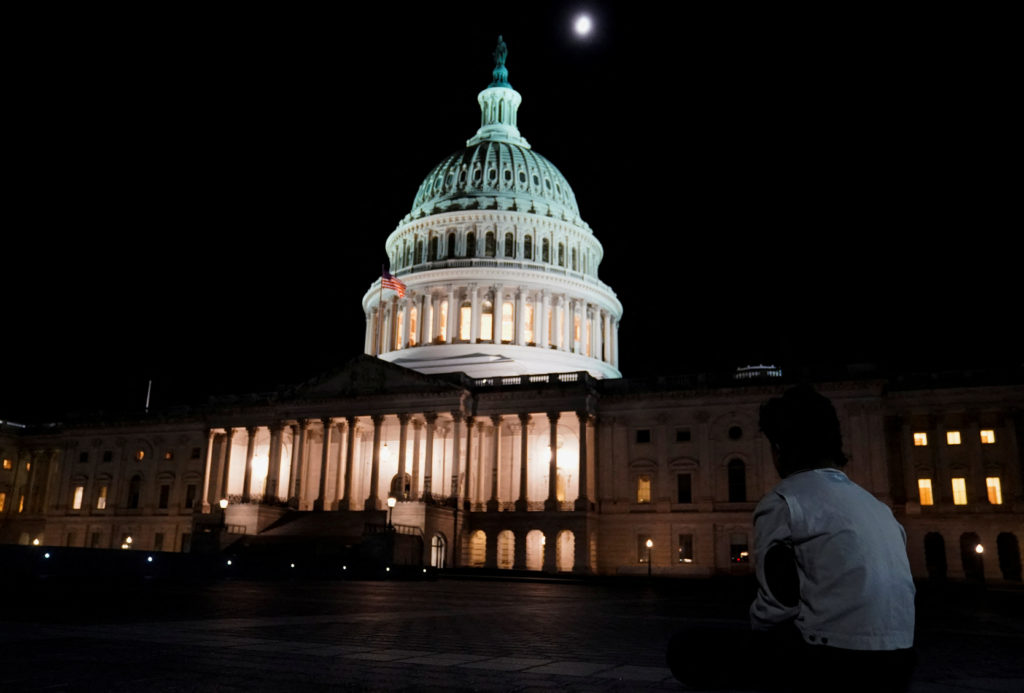Whats in and whats out of the debt ceiling deal between Biden and McCarthy

WASHINGTON (AP) — President Joe Biden and House Speaker Kevin McCarthy have reached an agreement in principle on legislation to increase the nation’s borrowing authority and avoid a federal default.
Negotiators are now racing to finalize the bill’s text. McCarthy, R-Calif., said the House will vote on the legislation on Wednesday, giving the Senate time to consider it before June 5, the date when Treasury Secretary Janet Yellen has said the United States could default on its debt obligations if lawmakers did not act in time.
READ MORE: How a debt default could affect you
While many details about the deal are unknown, both sides will be able to point to some victories. But some conservatives expressed early concerns that the compromise does not cut future deficits enough, while Democrats have been worried about proposed changes to work requirements in programs such as food stamps.
A look at what’s in and out of the deal, based on what’s known so far:
Two-year debt increase, spending limits
The agreement would keep nondefense spending roughly flat in the 2024 fiscal year and increase it by 1 percent the following year, as well as provide for a two-year debt-limit increase — past the next presidential election in 2024. That’s according to a source familiar with the deal who provided details on the condition of anonymity.
Veterans care
The agreement would fully fund medical care for veterans at the levels included in Biden’s proposed 2024 budget blueprint, including for a fund dedicated to veterans who have been exposed to toxic substances or environmental hazards. Biden sought $20.3 billion for the toxic exposure fund in his budget.
Work requirements
Republicans had proposed boosting work requirements for able-bodied adults without dependents in certain government assistance programs. They said it would bring more people into the workforce, who would then pay taxes and help shore up key entitlement programs, namely Social Security and Medicare.
Democrats had roundly criticized the proposed changes, saying they would lead to fewer people able to afford food or health care without actually increasing job participation.
House Republicans had passed legislation that would create new work requirements for some Medicaid recipients, but that was left out of the final agreement.
But the agreement would expand some work requirements for the Supplemental Nutrition Assistance Program, or SNAP, formerly known as food stamps. The agreement would raise the age for existing work requirements from 49 to 54, similar to the Republican proposal, but those changes would expire in 2030. The White House said it would at the same time reduce the number of vulnerable people at all ages who are subject to the requirements.
Speeding up energy projects
The deal puts in place changes in the National Environmental Policy Act that would designate “a single lead agency” to develop environmental reviews, in hopes of streamlining the process.
What was left out
Republicans had sought to repeal Biden’s efforts to waive $10,000 to $20,000 in debt for nearly all borrowers who took out student loans. But the provision was a nonstarter for Democrats. The budget agreement would keep Biden’s student loan relief in place, though the Supreme Court will have the ultimate say on the matter.
The Supreme Court is dominated 6-3 by conservatives, and those justices’ questions in oral arguments showed skepticism about the legality of Biden’s student loans plan. A decision is expected before the end of June.
ncG1vNJzZmivp6x7sa7SZ6arn1%2Bjsri%2Fx6isq2egpLmqwMicqmivmJbBtHnIp2SappRixKmt06xkqK2kYrynedOhnGaclZfBbq%2FEoqOippdisaaty2aZnqynmrKvecGim56mXZa7pXnMnJqaqqSdxg%3D%3D